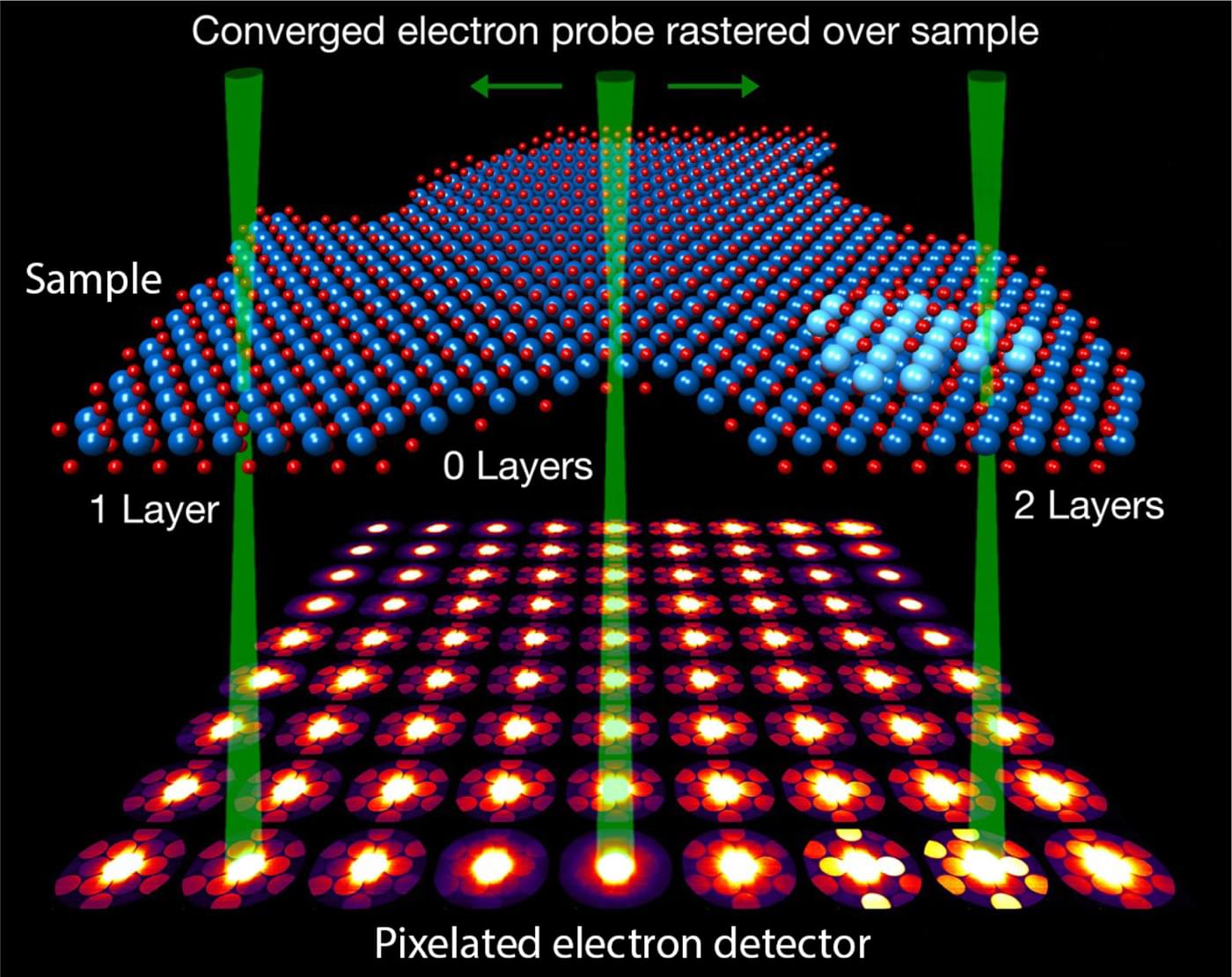Understanding 4D Scanning Transmission Electron Microscopy (4D-STEM)
Definition:4D Scanning Transmission Electron Microscopy (4D-STEM) is an advanced imaging technique that combines high-resolution electron microscopy with diffraction pattern analysis over a four-dimensional space. This method extends traditional STEM capabilities by collecting a two-dimensional (2D) diffraction pattern at each pixel of the scanned area, leading to a comprehensive three-dimensional (3D) spatial and one-dimensional (1D) angular resolution. The technique offers unparalleled insights into material structures at the nanoscale, facilitating detailed analysis of crystallographic information and electronic properties.

Principle of Operation
In 4D-STEM, an electron beam is raster-scanned across a specimen. At each position, instead of forming a single image, the microscope collects a full diffraction pattern. This series of diffraction patterns is then analyzed to extract structural and chemical information at the nanoscale. The technique leverages the interaction of electrons with matter to provide insights into the crystal structure, phase, orientation, and electronic properties of materials.
How 4D-STEM Works
The process begins with focusing an electron beam onto a thin sample. As the beam interacts with the sample, it undergoes scattering, and a 2D diffraction pattern is generated at each scan point. These patterns are then compiled into a 4D dataset, which includes two spatial dimensions (x, y), one angular dimension (diffraction pattern), and one dimension that can be varied, such as time or beam energy. Advanced computational algorithms are used to analyze these large datasets, enabling the extraction of detailed material properties.
Key Features of 4D-STEM
4D-STEM is characterized by several distinctive features that enhance its utility in materials science and nanotechnology:
- High Spatial and Angular Resolution: It provides detailed spatial mapping of materials at the nanoscale, coupled with precise angular resolution of diffraction patterns.
- Comprehensive Material Characterization: Enables the analysis of various material properties, including but not limited to, crystal structure, chemical composition, and electronic states.
- Flexibility in Sample Conditions: Compatible with a wide range of materials and can be applied to both conductive and non-conductive samples.
- Quantitative Analysis: Offers quantitative data on material properties, allowing for a deeper understanding of material behavior under different conditions.
Applications of 4D-STEM
4D-STEM has been applied across multiple disciplines, showcasing its versatility and power:
- Material Science: 4D-STEM materials characterization is used to study defects, grain boundaries, and interfaces in metals, semiconductors, and ceramics.
- Nanotechnology: Facilitates the characterization of nanoparticles, thin films, and nanocomposites.
- Quantum Materials: Enables investigation of quantum dots, 2D materials, and other quantum structures.
- Biological Sciences: Although more challenging, it can be used to image biological specimens at high resolution, providing insights into the structural organization of biological materials.
Recent Technological Advancements in 4D-STEM
Recent advances in detector technology, electron optics, and computational methods have significantly enhanced the capabilities of 4D-STEM. These improvements allow for faster data acquisition, higher resolution, and more sophisticated data analysis techniques, opening new avenues for research and application in material science and beyond.
Environmental and Industrial Applications
4D-STEM's ability to provide detailed insights into material structures makes it an invaluable tool in environmental science for analyzing particulate matter and pollutants. In industry, it aids in the development of new materials with optimized properties for electronics, energy storage, and catalysis.
